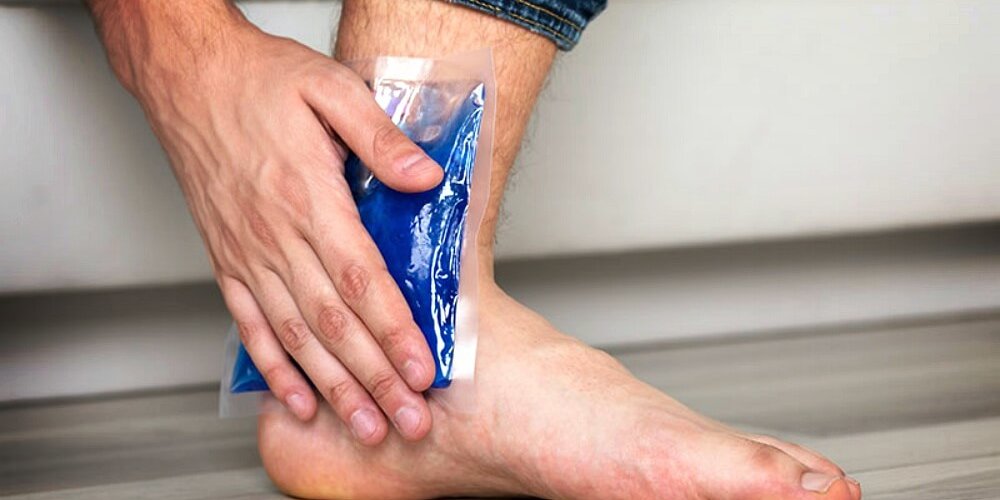Call 904.223.3321 to Schedule an Appointment TODAY
Millions of Americans are struggling with Complex Regional Pain Syndrome (CRPS). Jax Spine & Pain Centers Dr. Michael Hanes provides important information about living with CRPS. Furthermore, he explains how to prepare for a surgical procedure and what you can do to prevent CRPS from spreading.
Here are some important things to know about managing CRPS .
CRPS OVERVIEW
CRPS is a form of neuropathic pain that usually affects an extremity but can involve any area of the body. It usually occurs after a trauma or surgery, but can also occur spontaneously. CRPS is more common in women and it can occur at any age. It severely impacts people’s lives, family and friends.
CRPS can make daily tasks and chores nearly very difficult. Simple things like putting on pants, or pulling a blanket over the sore area can feel like thousands of needles at once or even a burning sensation. Circulation issues can also make the limb appear blotchy, blue, purple, pale, or red. The limb may also feel warmer or cooler than the opposite limb. The symptoms can vary in severity and duration. Unfortunately, CRPS can also spread to other parts of the body over time. This is often a very real fear for those suffering from this syndrome.
CRPS by International Association for the Study of Pain (IASP):
- Pain disproportionate to what would be expected after a trauma or lesion
- Patient must report at least one symptom in 3 out of 4 of the following categories:
- Sensory: Hyperalgesia and/or allodynia
- Vasomotor: Temperature asymmetry and/or skin color changes and/or skin color asymmetry
- Sudomotor/Edema: Edema and/or sweating changes and/or sweating asymmetry
- Motor/Trophic: A decrease in range of motion and/or motor dysfunction (weakness, tremor, dystonia) and/or trophic changes (hair, nail, skin)
- Patient must display at least one sign at the time of evaluation in 2 or more of the prior categories.
- There must be no other diagnosis that better explains the symptoms.
CRPS THERAPY OPTIONS
Rehabilitation and physical therapy – Physical therapy for CRPS focuses on desensitization and graded motor imagery. This helps increase range of motion, strength, flexibility and function. Rehabilitation and occupational therapy can help prevent or reverse the secondary brain changes that stem from chronic pain. This can help patients learn new ways to work and perform daily tasks.
Psychological and Behavioral Therapy – This therapy focuses on patient and family education. Biofeedback can play an important role to help minimize the central sensitization that occurs with CRPS.
MEDICATIONS AND OTHER TREATMENTS
Medications – No drug currently has approval by the U.S. Food and Drug Administration specifically for CRPS. Yet, patients have found relief with several medications particularly when used in the early stages of the disease. These include membrane stabilizers (gabapentin, pregabalin, topiramate), corticosteroids, calcium channel blockers, NSAIDs, and in some cases opioids.
Sympathetic nerve blocks – Sympathetic blocks involve injecting an anesthetic next to the spine to directly block the activity of sympathetic nerves and improve blood flow. Lumbar sympathetic blocks and stellate ganglion blocks are examples of sympathetic blocks to treat lower and upper extremity pain, respectively.
Surgical sympathectomy – This procedure destroys some of the nerves next to the spine. This is typically a last line therapy when all other therapies fail.
Spinal cord/Dorsal root ganglion stimulation – Spinal cord and dorsal root ganglion stimulators treat CRPS affecting the upper or lower extremities. Electrodes are put next to the spinal cord or dorsal root ganglion using a needle. Patients undergo a trial prior-to implant to ensure that the therapy will work. If the patient has a successful trial (>50% relief), they will proceed with the implant. This involves placing the electrodes along with a small battery pack all underneath the skin.
Intrathecal drug pumps – These devices infuse pain-relieving medications directly into the spinal fluid surrounding the spinal cord. Targeting the pain signaling areas in the spinal cord uses less doses than if taken orally. This decreases side effects and increases drug effectiveness.
Ketamine – Ketamine is a potent anesthetic typically given intravenously. Several studies show that infusions of ketamine given over hours or days can provide significant, long-term relief for patients with CRPS.
MINIMIZE THE SPREAD OF CRPS DURING SURGERY
A patient with CRPS already has a nervous system on high pain high alert so it’s extremely sensitive to new stimuli.
There are several precautions a patient can take to minimize the spread of CRPS when going in for a surgical procedure. Patients can request that medical personnel use the smallest needle possible for IV placement. In addition, they can ask to have it done by an expert or directly by the anesthesiologist. IV fluids can be made warm prior to them being given. According to American RSDhope, these things may reduce the probability of causing a spike in your pain that can last after your surgery is over. None of these things are difficult for medical staff to do and may save you weeks or longer of an increase in pain.
If possible avoid surgery in a limb with CRPS. Or, at a minimum make sure that symptoms reduce or are absent at the time of surgery if surgery on that limb is an order.
Sympathetic blocks and/or regional anesthesia can be given prior to surgery. As a result, this has been shown to reduce the risk of CRPS spreading following surgical procedures. These can include, but are not limited to, stellate ganglion blocks, lumbar sympathetic blocks, supraclavicular blocks, lumbar plexus blocks, epidural anesthesia, and spinal anesthesia.
Several IV and oral medications help to reduce the risk of developing CRPS. Some of these include membrane stabilizers (gabapentin, pregabalin), Vitamin C, calcitonin, carnitine, corticosteroids, mannitol, and ketamine.
PAIN EXPERTS CAN BRING RELIEF
For more information on lower back pain or for any other pain relief inquiries call the experts at Jax Spine & Pain Centers today – 904.223.3321.







